1. Tutor, tutee, tool?...
1.1. 1. Tutor
1.1.1. The computer deliver the information and teaches the learner. Authoring software is available, so teachers can create and design tasks virtually and the students can interact in a more close and easy way. This tutor role, allows the computers to personalize the teaching according the students' needs.
1.2. 2. Tutee
1.3. Unlike the tutor, here the learner teaches the computer. In this scenario, the learner constructs knowledge. This process has its bases on Piaget and his constructivist paradigm. The focus here, is in the interaction. Authoring software can also be used by students to create activities and promote imagination, didactic interactions and to elicit their knowledge
1.4. 3. Tool
1.4.1. Word-processing programs / Editing software mainly for videos. Using this tools is what is truly worth it to learn instead of being connected with technology and devices. These devices, play the role of mediators in communication. Vigotsky's social constructivism has strong influence with the interaction achieved through these devices.
1.5. Skinner's, Vigotsky's and Bruner's theories influenced Taylor's theory of roles
1.6. Stevenson (2008) suggested "Environment" as one of two further roles, the other being technology as "resource".
2. Fom CALL to TELL
2.1. A transition from computer-assisted language learning to technology enhanced language learning.
2.2. Approaches (instead of phases), as a consequence of the constant evolution and changes. Approaches may co-exist and adapt to new technology.
2.3. TELL includes a wider variety of devices, not just computers but cellphones, game consoles and tablets.
2.4. Technology has potential to be used in the classroom, although not always occurs in that way.
3. Learning from a more able peer
3.1. Vigotzky's ZPD
3.1.1. Gap between what has been learned and what will or can be learned
3.2. Brunner's scaffolding
3.2.1. Support, encouragement and backing the learning process
4. Computer assisted language learning
4.1. Phases according to Warschauer
4.1.1. 1. Structural CALL
4.1.1.1. Language as a formal system of structures focused on drill and practice to achieve accuracy.
4.1.2. 2. Communicate CALL
4.1.2.1. Knowledge about language is constructed in the learner's mind. CLT methodology was dominant at this stage.
4.1.3. 3. Integrative CALL
4.1.3.1. Early use of technology, specifically, Multimedia and the Internet.
4.2. Bax's approaches to CALL
4.2.1. I. Restricted CALL
4.2.1.1. The type of questions, responses, feedbacks (interaction in general) are closed and restrictive.
4.2.2. II. Open CALL
4.2.2.1. In his opinion, CLT has not connection with real communication. Open CALL promoted open - ended interaction between users and computers.
4.2.3. III. Integrated CALL
4.2.3.1. Integrated CALL will be achieve when technology is normalized and its usable for everyone. Teachers need to integrate the technology and know how to use to take advantage of it and benefit the class development.
4.2.4. (Bax argued that language learning was not linear as Warschauer said. He also claimed that structural, communicative and integrative CALL were obsolete)
5. Communicative and digital competence
5.1. Model of communicative competence (Canale and Swain)
5.1.1. 1. Linguistic competence involves knowing how the language works. This considers elements such as semantics and pragmatics.
5.1.2. 2. Sociolinguistic competence is about understanding the language used in context. Focus on communicative purpose.
5.1.3. 3. Discourse competence is the ability of create large pieces of language to create conversations.
5.1.4. 4. Strategic competence is the ability to "fix" communicative mistakes and to work around unfamiliar areas of the language.
5.2. Model of digital competence (Walker)
5.2.1. 1. Procedural competence
5.2.1.1. The ability of manipulate technology in terms of both software and apps. To know how to use technology in general. -Basic skills-. Grammar-translation method is a applicable to this process.
5.2.2. 2. Socio-digital competence
5.2.2.1. Understanding what technological resource is appropriate to use depending of the situation or context. How to manage data under the concept of privacy settings.
5.2.3. 3. Digital discourse competence
5.2.3.1. The ability of manage extended tasks. The user is required to use more complex skills regarding technological devices or software.
5.2.4. 4. Strategic competence
5.2.4.1. The ability to face and repair problems around the gaps in technological knowledge and skills. This does not demands advanced ICT skills.
